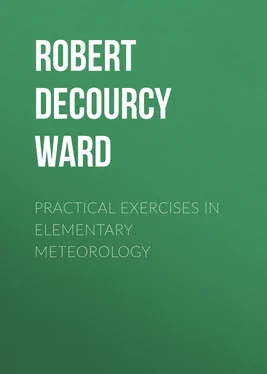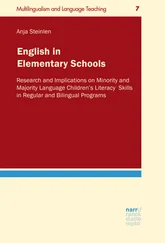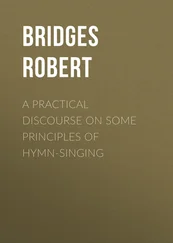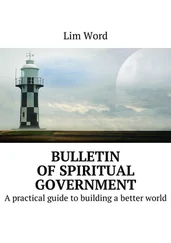Robert DeCourcy Ward - Practical Exercises in Elementary Meteorology
Здесь есть возможность читать онлайн «Robert DeCourcy Ward - Practical Exercises in Elementary Meteorology» — ознакомительный отрывок электронной книги совершенно бесплатно, а после прочтения отрывка купить полную версию. В некоторых случаях можно слушать аудио, скачать через торрент в формате fb2 и присутствует краткое содержание. Жанр: foreign_antique, Физика, foreign_edu, на английском языке. Описание произведения, (предисловие) а так же отзывы посетителей доступны на портале библиотеки ЛибКат.
- Название:Practical Exercises in Elementary Meteorology
- Автор:
- Жанр:
- Год:неизвестен
- ISBN:нет данных
- Рейтинг книги:4 / 5. Голосов: 1
-
Избранное:Добавить в избранное
- Отзывы:
-
Ваша оценка:
- 80
- 1
- 2
- 3
- 4
- 5
Practical Exercises in Elementary Meteorology: краткое содержание, описание и аннотация
Предлагаем к чтению аннотацию, описание, краткое содержание или предисловие (зависит от того, что написал сам автор книги «Practical Exercises in Elementary Meteorology»). Если вы не нашли необходимую информацию о книге — напишите в комментариях, мы постараемся отыскать её.
Practical Exercises in Elementary Meteorology — читать онлайн ознакомительный отрывок
Ниже представлен текст книги, разбитый по страницам. Система сохранения места последней прочитанной страницы, позволяет с удобством читать онлайн бесплатно книгу «Practical Exercises in Elementary Meteorology», без необходимости каждый раз заново искать на чём Вы остановились. Поставьте закладку, и сможете в любой момент перейти на страницу, на которой закончили чтение.
Интервал:
Закладка:
Robert DeCourcy Ward
Practical Exercises in Elementary Meteorology
PREFACE
The advance of meteorology as a school study has been much hampered by the lack of a published outline of work in this subject which may be undertaken during the school years. There are several excellent text-books for more advanced study, but there is no laboratory manual for use in the elementary portions of the science. In many secondary schools some instruction in meteorology is given, and the keeping of meteorological records by the scholars is every year becoming more general. There is yet, however, but little system in this work, and, in consequence, there is little definite result. The object of this book is to supply a guide in the elementary observational and inductive studies in meteorology. This Manual is not intended to replace the text-books, but is designed to prepare the way for their more intelligent use. Simple preliminary exercises in the taking of meteorological observations, and in the study of the daily weather maps, as herein suggested, will lay a good foundation on which later studies, in connection with the text-books, may be built up. Explanations of the various facts discovered through these exercises are not considered to lie within the scope of this book. They may be found in any of the newer text-books.
This Manual lays little claim to originality. Its essential features are based on the recommendations in the Report on Geography of the Committee of Ten. A scheme of laboratory exercises, substantially the same as that proposed in this Report, was, for some fifteen years, the basis of the work in elementary meteorology done in Harvard College under the direction of Professor William M. Davis. The plan proposed by the Committee of Ten has been thoroughly tested by the writer during the past five years, not only in college classes, but also in University Extension work among school teachers, and the present book embodies such modifications of that scheme and additions to it as have been suggested by experience. Emphasis is laid throughout this Manual on the larger lessons to be learned from the individual exercises, and on the relations of various atmospheric phenomena to human life and activities. No attempt is made to specify in exactly what school years this work should be undertaken. At present, and until meteorology attains a recognized position as a school study, teachers must obviously be left to decide this matter according to the opportunities offered in each school. The general outline of the work, however, as herein set forth, is intended to cover the grammar and the high school years, and may readily be adapted by the teacher to fit the circumstances of any particular case.
This book contains specific instructions to the student as to the use of the instruments; the carrying out of meteorological observations; the investigation of special simple problems by means of the instruments; and the practical use of the daily weather maps. The Notes for the Teacher, at the end of the book, are explanatory, and contain suggestions which may be useful in directing the laboratory work of the class.
It has been the privilege of the author during the past ten years to study the science of meteorology, and the methods of teaching that science, under the constant direction of Professor William Morris Davis, of Harvard University. To Professor Davis the author is further indebted for many valuable suggestions in connection with the arrangement and treatment of the subject-matter of this book. Thanks are due also to Mr. William H. Snyder, of Worcester (Mass.) Academy, and to Mr. John W. Smith, Local Forecast Official of the United States Weather Bureau, Boston, Mass., for valued criticisms.
ROBERT DeC. WARD.Harvard University, Cambridge, Mass.,
September, 1899.
ACKNOWLEDGMENT OF FIGURES
1, 7, 8, 9, 10, 16. Meteorological Instruments. H. J. Green, 1191 Bedford Avenue, Brooklyn, N. Y.
2, 4. Instrument Shelter and Rain Gauge. Instructions for Voluntary Observers. United States Weather Bureau.
5. Mercurial Barometer. L. E. Knott Apparatus Co., 14 Ashburton Place, Boston, Mass.
12, 15, 53. Thermograph and Barograph Curves, and Cyclonic Composite. Davis, Elementary Meteorology .
17. Nephoscope. Annals Harvard College Observatory , Vol. XX, Part I.
48. North Atlantic Cyclone. Pilot Chart of the North Atlantic Ocean. United States Hydrographic Office.
51. Wind Rose. Quarterly Journal Royal Meteorological Society , Vol. XXIV, No. 108.
INTRODUCTION
THE IMPORTANCE OF METEOROLOGY: ITS RELATIONS TO MAN
We live in the laboratory of the earth’s atmosphere. The changes from hot to cold, wet to dry, clear to cloudy, or the reverse, profoundly affect us. We make and unmake our daily plans; we study or we enjoy vacations; we vary our amusements and our clothing according to these changes. The weather forecasts for the day in the newspaper are read even before the telegraphic despatches of important events. Sailors about to put to sea govern themselves according to the storm warnings of our Weather Bureau. Farmers and shippers of fruit, meat, and vegetables anxiously watch the bulletins of cold or warm waves, and guard against damage by frost or excessive heat. Steam and electric railways prepare their snow-plows when a severe snowstorm is predicted.
Meteorology, the science of the atmosphere, is thus of very great interest and importance. There is no subject a knowledge of which does more to make our daily life interesting. Since we live in the midst of the atmosphere and cannot escape from the changes that take place in it, we must, consciously or unconsciously, become observers of these changes. Examples of the varying processes at work in the atmosphere are always with us. There is no end to the number and the variety of our illustrations of these processes. Man is so profoundly affected by weather changes from day to day that all civilized countries have established weather services. Observers taking regular weather records are stationed at thousands of different places in all parts of the world, and the observations which they make are used by meteorologists in preparing daily weather maps and forecasts, and in studying the conditions of temperature, winds, and rainfall. In the United States alone there are about 3000 of these observers.
These observations are not made on land only. Hundreds of ship captains on all the oceans of the world are making their regular daily meteorological records, which at the end of the voyage are sent to some central office, 1 1 In the United States, marine meteorological observations are forwarded to the United States Hydrographic Office, Navy Department, Washington.
where they are studied and employed in the preparation of Pilot Charts for the use of mariners. By means of these ocean meteorological observations, which were first systematized and carried out on a large scale under the direction of Lieutenant Matthew Fontaine Maury (born, 1806; died, 1873), of the United States Navy, it has become possible to lay out the most favorable sailing routes for vessels engaged in commerce in all parts of the world.
So important is a knowledge of the conditions of the winds and the weather, that scientific expeditions into unexplored or little-known regions give much of their time to meteorological observations. On the famous Lady Franklin Bay Expedition (1881-1884) of Lieutenant (now General) A. W. Greely, of the United States Army, meteorological observations were kept up by the few feeble survivors, after death by disease and starvation had almost wiped out the party altogether, and when those who were left had but a few hours to live unless rescue came at once. On Nansen’s expedition to the “Farthest North,” on Peary’s trips to Greenland, and on every recent voyage to the Arctic or the Antarctic, meteorological instruments have formed an important part of the equipment.
Читать дальшеИнтервал:
Закладка:
Похожие книги на «Practical Exercises in Elementary Meteorology»
Представляем Вашему вниманию похожие книги на «Practical Exercises in Elementary Meteorology» списком для выбора. Мы отобрали схожую по названию и смыслу литературу в надежде предоставить читателям больше вариантов отыскать новые, интересные, ещё непрочитанные произведения.
Обсуждение, отзывы о книге «Practical Exercises in Elementary Meteorology» и просто собственные мнения читателей. Оставьте ваши комментарии, напишите, что Вы думаете о произведении, его смысле или главных героях. Укажите что конкретно понравилось, а что нет, и почему Вы так считаете.












